Quick & Heartwarming Vegetable Beef Soup Recipe for Chilly Days
Hearty vegetable beef soup emerges as a comforting classic that warms your soul on chilly days.
Robust chunks of tender meat blend perfectly with colorful garden vegetables.
Savory broth carries deep, rich flavors that dance across your palate.
Nutritious ingredients create a satisfying meal packed with wholesome goodness.
Kitchen magic happens when simple components merge into something extraordinary.
Each spoonful promises a delightful journey through rustic, home-style cooking.
Dive into this recipe and let deliciousness guide your culinary adventure.
Vegetable Beef Soup That Warms The Soul
Ingredients For Vegetable Beef Soup
Protein Base:Aromatic Vegetables:Vegetable Mix:Liquid Base:Tomato Component:Seasoning Blend:Cooking Fat:How To Make Vegetable Beef Soup
Step 1: Sear the Beef
Warm olive oil in a large pot over medium heat. Carefully place beef cubes into the pot and brown them on all sides until they develop a rich, golden crust.
Transfer the browned beef to a separate plate and set aside.
Step 2: Build the Flavor Base
In the same pot, add chopped onions and minced garlic.
Sauté until the onions become translucent and release their sweet aroma, creating a delicious foundation for the soup.
Step 3: Combine Beef and Liquid
Return the seared beef to the pot.
Pour in beef broth and diced tomatoes. Sprinkle in a blend of dried thyme, oregano, paprika, salt, and pepper.
Stir everything thoroughly to combine all the flavors.
Step 4: Initial Simmering
Bring the mixture to a rolling boil, then reduce the heat to low.
Let the soup simmer gently for 30 minutes, allowing the beef to become tender and the flavors to meld together.
Step 5: Add Hearty Vegetables
Introduce a colorful mix of vegetables to the pot:Continue simmering for 20-25 minutes until the vegetables become perfectly tender.
Step 6: Final Vegetable Touch
Stir in sweet corn and tender peas. Cook for an additional 5 minutes to warm through and blend the flavors.
Step 7: Season and Serve
Taste the soup and adjust the seasonings as needed. Ladle the steaming soup into bowls and serve immediately for a comforting, nutritious meal.
Tips For Vegetable Beef Soup
Variations On Vegetable Beef Soup
Serving Suggestions For Vegetable Beef Soup
Proper Storage For Vegetable Beef Soup
FAQs
Browning the beef creates a deeper, richer flavor through caramelization called the Maillard reaction. This technique helps develop complex taste and seals in the meat’s juices, making the soup more delicious.
Yes, frozen vegetables work perfectly. They’re pre-cut, convenient, and retain similar nutritional value. Just add them slightly later in the cooking process to prevent overcooking and maintain their texture.
Chuck roast or stew meat are ideal because they’re flavorful, affordable, and become tender during slow cooking. These cuts have enough marbling to keep the meat juicy and add richness to the soup.
Print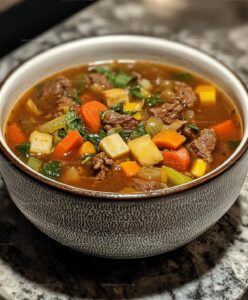
Best Vegetable Beef Soup Recipe
- Total Time: 1 hour 20 minutes
- Yield: 6 1x
Description
Hearty vegetable beef soup brings comfort and warmth to family dinners with its robust blend of tender meat and seasonal vegetables. Nutritious ingredients and simple cooking techniques ensure a satisfying meal that nourishes both body and soul.
Ingredients
Main Protein:
- 1 pound (454 grams) beef stew meat, cubed
Vegetables:
- 3 carrots, sliced
- 2 celery stalks, sliced
- 2 potatoes, diced
- 1 onion, diced
- 3 garlic cloves, minced
- 1 cup green beans, chopped
- 1 cup corn kernels (fresh, canned, or frozen)
- 1 cup peas (fresh or frozen)
- 1 can (14 ounces/396 grams) diced tomatoes
Seasonings and Liquids:
- 4 cups beef broth
- 1 tablespoon olive oil
- 1 teaspoon dried thyme
- 1 teaspoon dried oregano
- 1 teaspoon paprika
- Salt and pepper, to taste
Instructions
- Sear beef cubes in a hot pot with olive oil until golden brown on all sides, creating a rich caramelized exterior. Transfer meat to a separate plate.
- In the same pot, gently sweat onions and garlic until translucent and fragrant, releasing their aromatic flavors.
- Reintroduce the browned beef to the pot, then pour in beef broth, diced tomatoes, and sprinkle thyme, oregano, paprika, salt, and pepper. Mix thoroughly to combine all ingredients.
- Elevate the mixture to a rolling boil, then immediately reduce heat to a gentle simmer. Allow the soup to cook for 30 minutes, developing deep, complex flavors.
- Incorporate carrots, celery, potatoes, and green beans into the simmering liquid. Continue cooking for 20-25 minutes until vegetables become fork-tender and absorb the rich broth.
- Introduce corn and peas during the final 5 minutes of cooking, ensuring they remain vibrant and retain their natural sweetness.
- Taste and fine-tune seasonings, balancing flavors with additional salt and pepper if needed. Ladle the steaming soup into bowls and serve immediately for maximum enjoyment.
Notes
- Enhance meat tenderness by selecting chuck roast or stew meat with good marbling, which breaks down during slow cooking.
- Transform into a low-carb version by replacing potatoes with cauliflower chunks and reducing total cooking time by 10 minutes.
- Boost umami flavor by adding a splash of Worcestershire sauce or a tablespoon of tomato paste during initial beef browning stage.
- Freeze leftover soup in portion-sized containers for quick meals, ensuring vegetables remain firm by slightly undercooking before freezing.
- Prep Time: 20 minutes
- Cook Time: 1 hour
- Category: Lunch, Dinner, Appetizer
- Method: Simmering
- Cuisine: American
Nutrition
- Serving Size: 6
- Calories: 230 kcal
- Sugar: 5 g
- Sodium: 400 mg
- Fat: 9 g
- Saturated Fat: 3 g
- Unsaturated Fat: 6 g
- Trans Fat: 0 g
- Carbohydrates: 18 g
- Fiber: 4 g
- Protein: 20 g
- Cholesterol: 60 mg

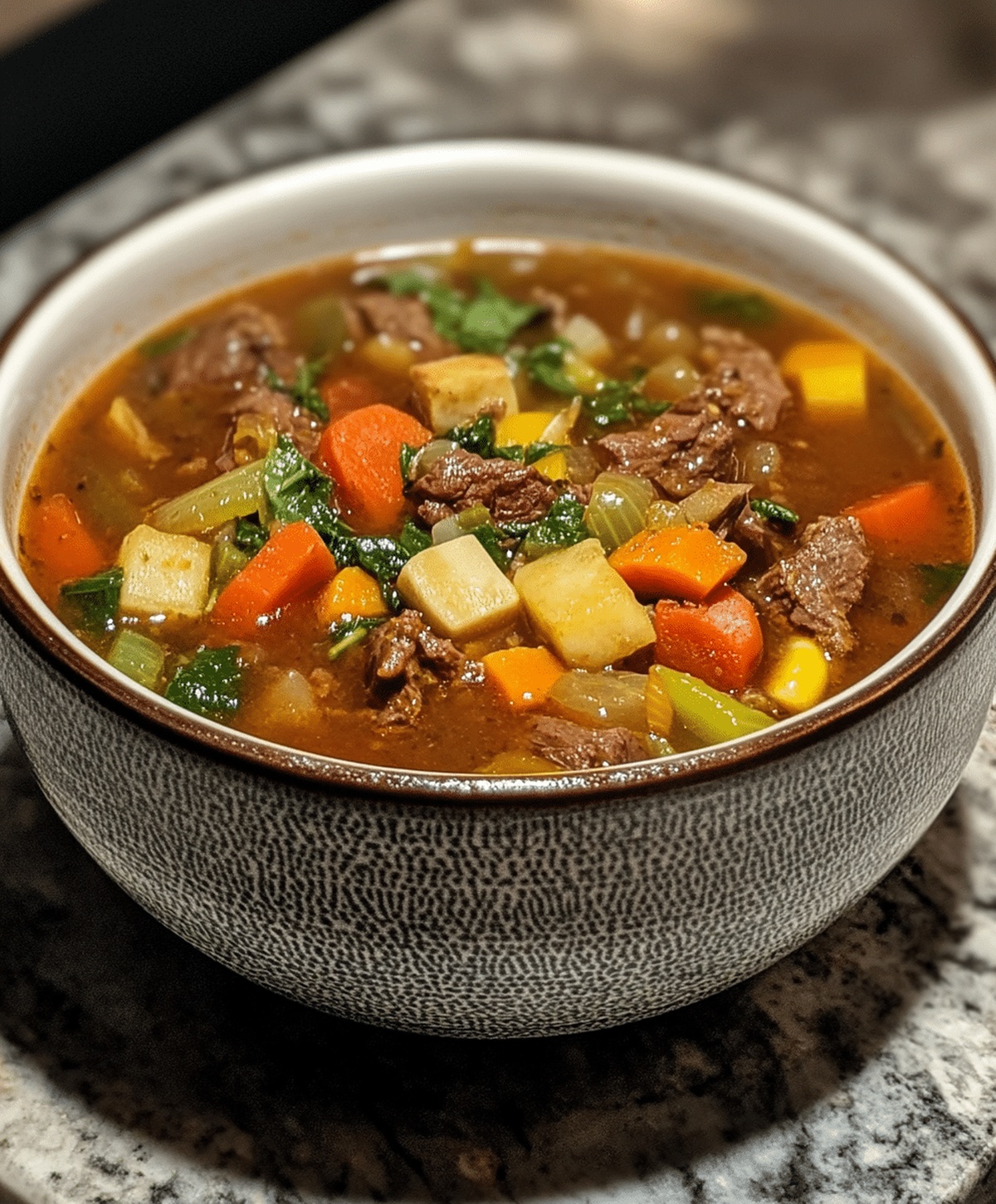
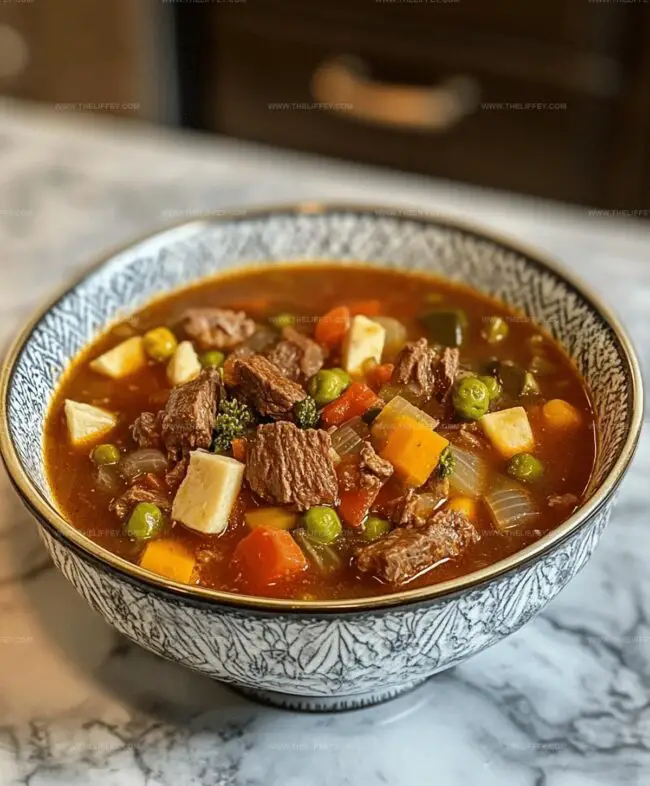
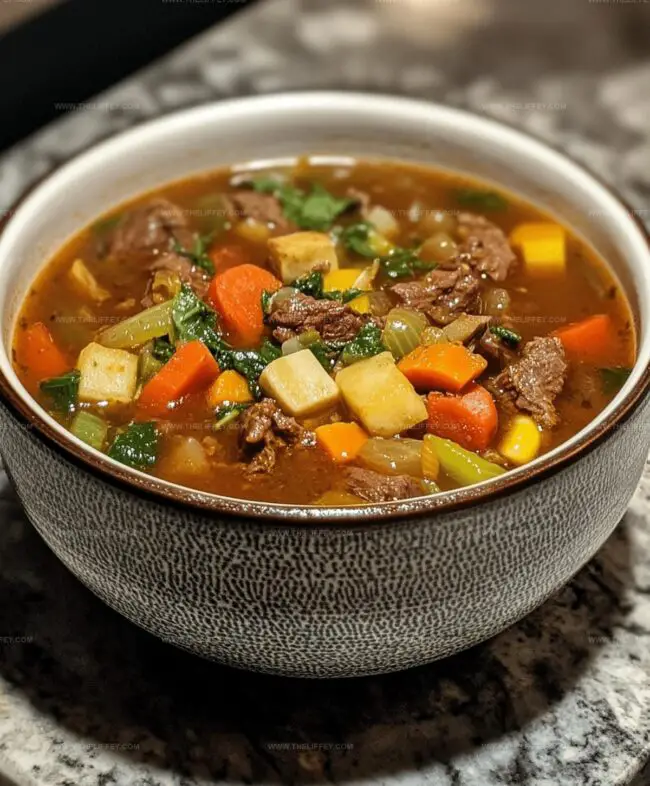
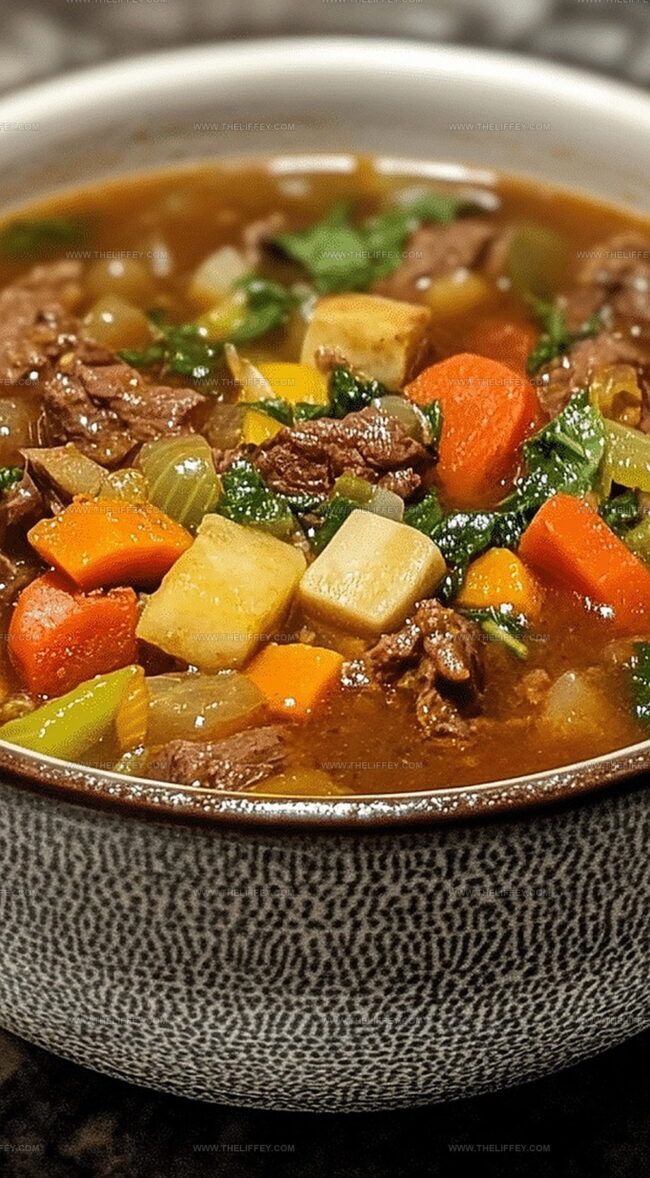
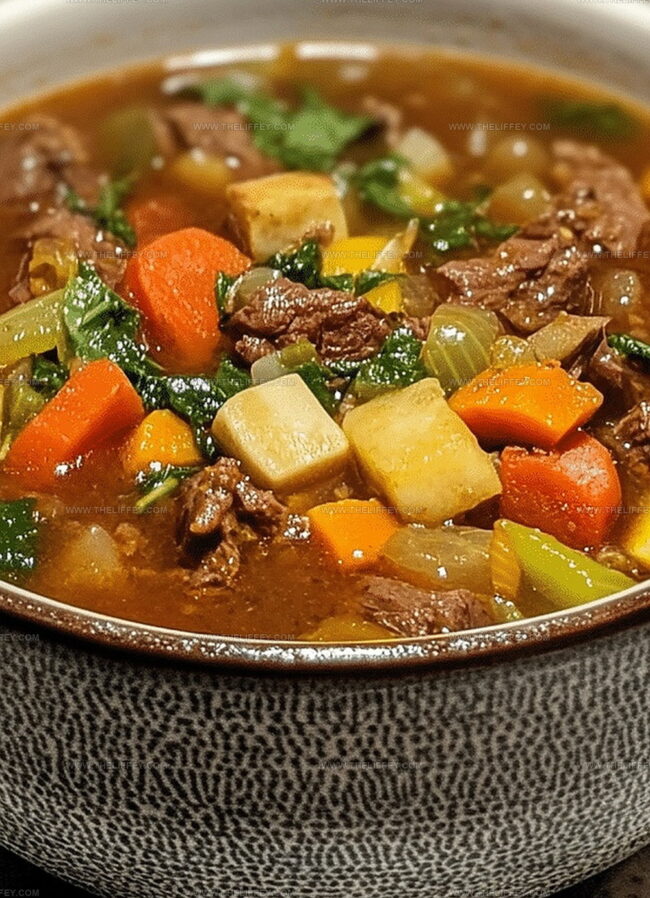
John Conley
Founder & Culinary Storyteller
Expertise
Recipe Development, Culinary Writing, Home Cooking Techniques, Seasonal Ingredient Utilization
Education
Lane Community College, Eugene, OR
Certificate in Culinary Arts
Focused on foundational cooking techniques, kitchen safety, and menu planning.
Gotham Writers Workshop, New York, NY
Course in Food Writing
Explored the art of crafting engaging culinary narratives and recipe development.
John grew up where food meant connection: big bowls, warm kitchens, and meals that told a story. After earning his Certificate in Culinary Arts from Lane Community College and diving deep into food writing at Gotham Writers Workshop, he found his calling: turning everyday recipes into something worth savoring.
At The Liffey, John’s focus is all about crafting dishes that feel easy, honest, and full of heart.